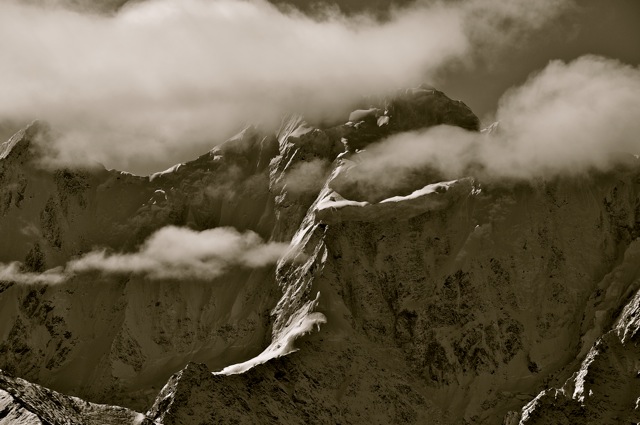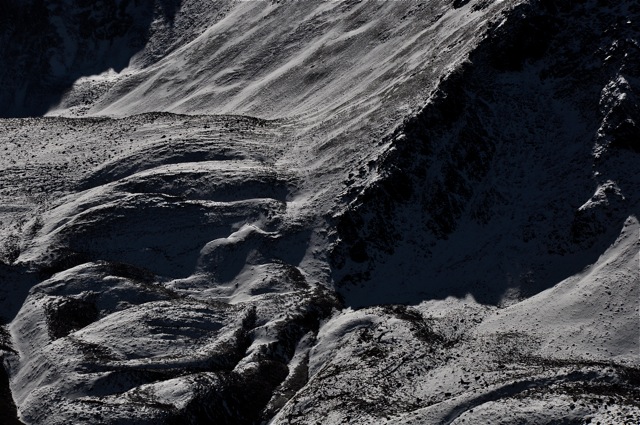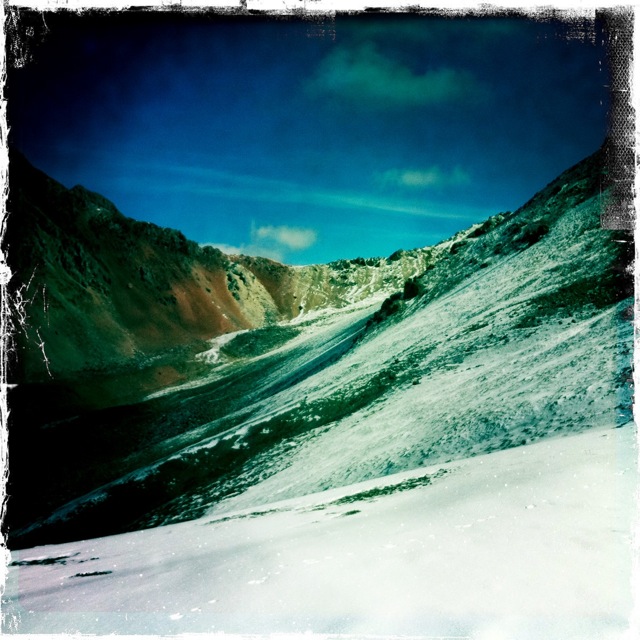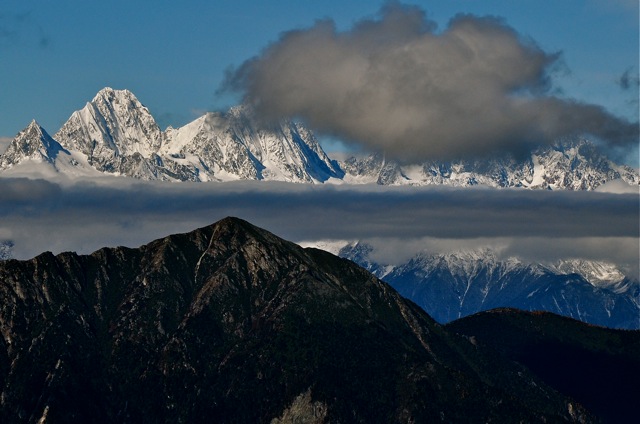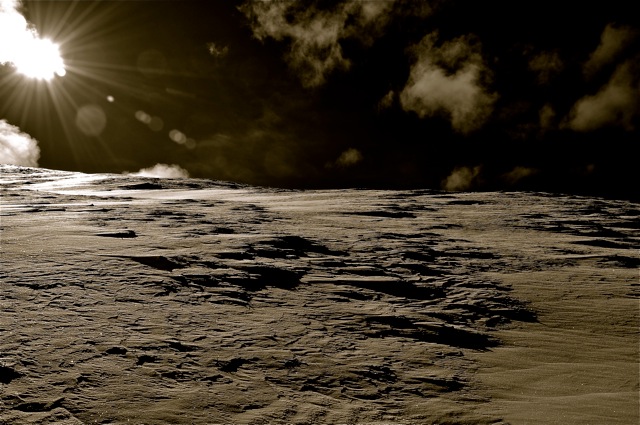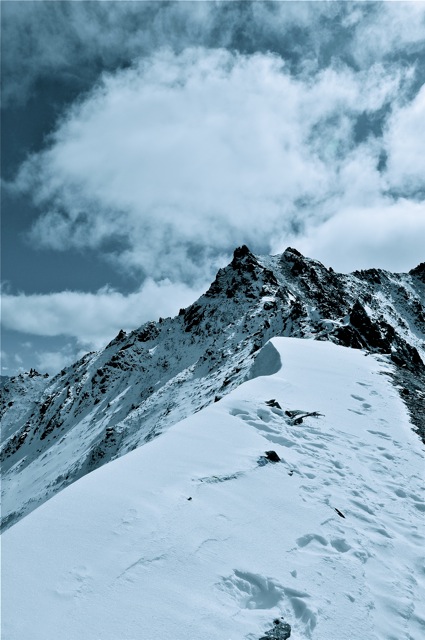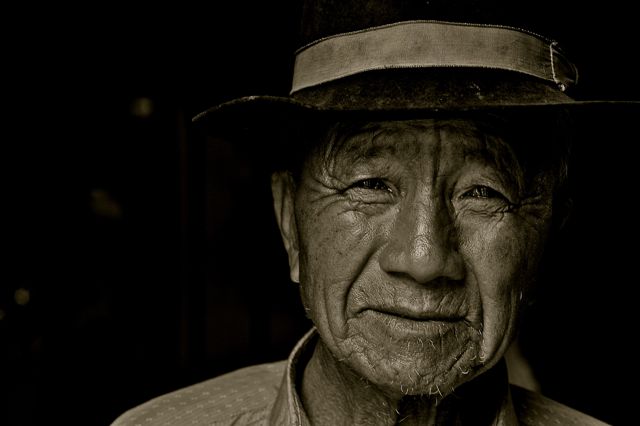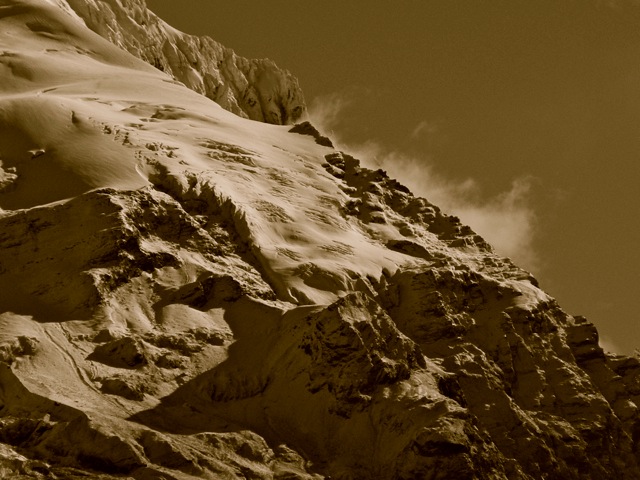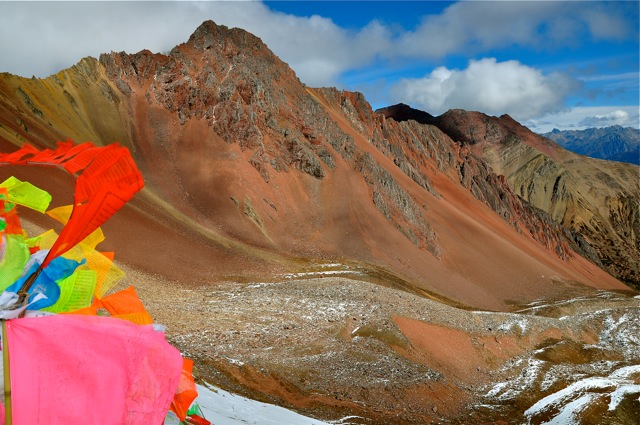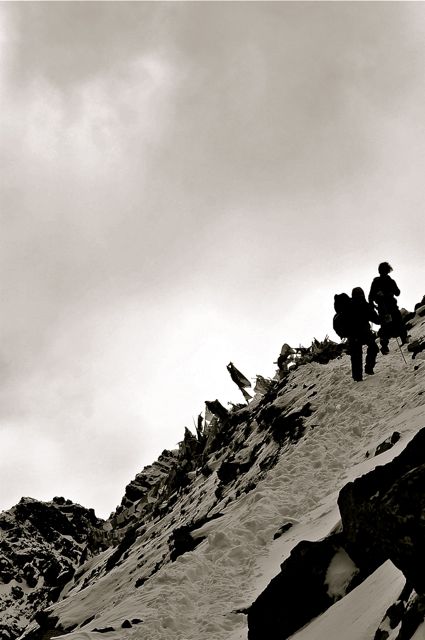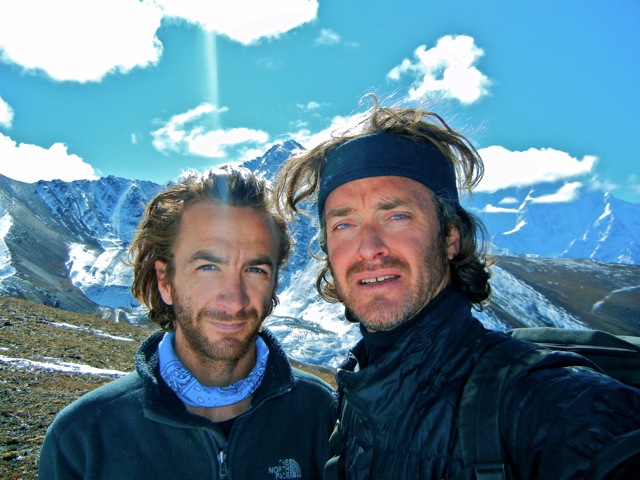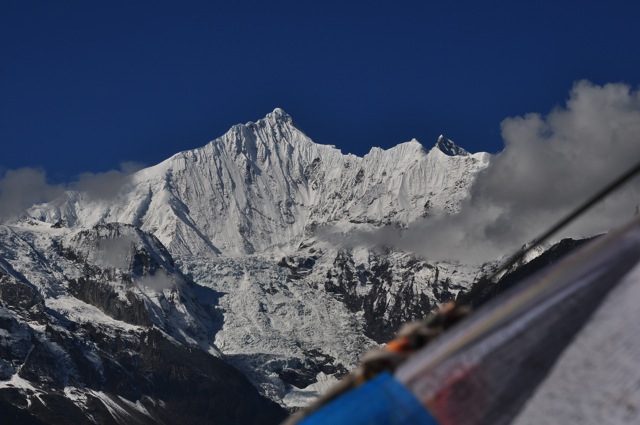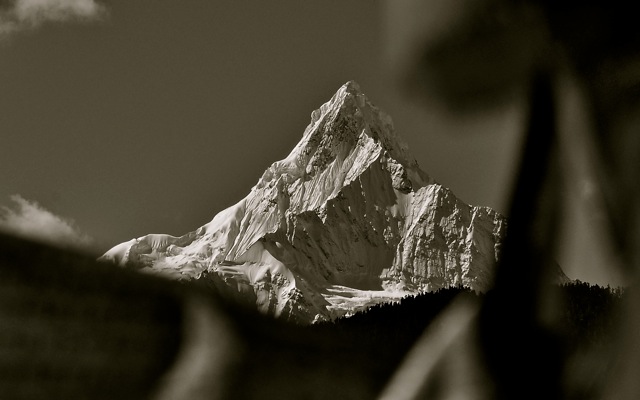Skies, snow and peaks have replaced moss-laden trees and the mind clears along with this parting of the eyes’ peripheral. All of a sudden the introspection that has come with days of tunneling through gargoyle forests and wandering mosses gets broken up with blue and snow. It is a breakthrough of the kind that regenerates the blood in quick order.
Morning was a brittle emergence into the world above four thousand metres, with Dorje lighting up three cigarettes before emerging from his yellow sleeping bag. Our faces have the hard swollen masks that minus 15 degrees Celsius brings. Dawn is a still, cold purple hue. A thermos of tea in mitt, I turn and the world turns too, in both shade and shape. The night before we camped with only wisps of views; this morning the world has turned. To the south of our little camp is the sumptuous wall of snow and stone of the main Kawa Karpo peak. Ominous and close it wakes as we all do…slowly. Its ‘wife’ Metsomo, lies further south far from view but it, more than its hulking- husband makes the eye linger and appreciate its sharper more delicate lines.
Sho Pass (Sho’la) waits for us this day, which will be one of our last on this kora. In 2006 this pass of two faces almost took a friend’s life in a frenzied blizzard during an expedition along the Tea Horse Road, but then we had come from the east heading west towards Tsawarong in Tibet. Now we are heading in the opposite direction. “Sho”, in Tibetan often refers to the sour and tantalizing yak yoghurt that is served in nomadic homes…it refers too to the white layers that swath the pass’s surface most of the year.
Every step brings sharper air and finally our emergence from the forests is complete – stone in red and grey, patches of brilliant crystalline snow and a beautiful nothingness takes over. Snow, shorn off by winds – instantly powdered – create small moving clouds of white along the edges of the peaks.
West of us the sharp elegance of Namcha Barwa’s seven thousand metre-plus spikes cruise the skylines. It lies within the borders of Tibet proper and serves to my eyes at least as a kind of border. Our world this morning is shut in on all sides by a magnificence that cannot be denied. It is the unrelenting beauty of the powerful .
A single path treads upwards and a hearty group of pilgrims – all women – are chirping and making their way up with us. A crest of snow ridges to our southern line beckons and this time I will not be denied, steering a course with Michael in tow onto the steep slopes to be closer to the great Kawa Karpo. Much like passes, lakes and peaks throughout the Himalayas the mountain demands respect, just as any spirit does and my version of respect is to get close.
The snow reflection blazes into the eyes, the warmth nicely scorches into the bones and a white-hot sun rifles across all. Michael’s figure is a distant but reassuring dot and our family is out of site. Nothing but mountain winds hit the ears. It, like so many of the great heights, is mesmerizing and beckoning in the way that the oceans draw one (and in many instances never relinquish). Michael in these instances of my impetuous and often questionable whims is the ultimate mountain partner, eagerly indulging my desires to get further into the mountains, further out into the clear blue air, away…
Moving towards the red stone and fluttering prayer flags of Shola, drifts of permanent white snow are surprisingly deep, swallowing the legs up to the hip.
The pass is notorious for its ability to morph from a dry clear run of stone and blue sky into a ferocious stage of blizzard-white. My own experience upon the pass took place laying our team of five on our knees crawling along for hours with only a metre and a half of visibility. Locals believe it is the deities that decide who to test, who to take and who to allow. Many pilgrims and locals alike become disoriented and die, only to be found in the spring thaw…providing of course there is a thaw at all. Upon arriving at the pass, pilgrims, travelers and the desperate alike offer a thanks while staggering around in the remorseless winds. They offer thanks that they were allowed to make it. One trader along the Tea Horse Road had described it as a “beautiful hell”. It has long been a test of mortal will for both traders and pilgrims, though this day it remains behaved, issuing out only hints of what it is capable of producing.
Though more than five years ago, the face of Dawa, an old Tibetan trader – who lived below the great Shola – and his rasping voice remain fixed in my mind.
It was his warning of Shola’s potential wrath, his respect and fear for the pass that created this ‘Shola’ envelope of awe in my mind. His warnings were clear, accurate and almost prophetic as he urged our team not to underestimate for a blink the pass and its moods.
Mules, paralyzed by ice in their hooves, caravans split into two and lost from eachother (while only a few dozen metres apart), pilgrims traveling in circles only to freeze to death would give way to a gentle breeze at 4800 metres revealing the havoc only in spring.
Dorje waits at the pass, hooded and cigarette-less when we arrive back from our detour. His pack of goods rests on the pass summit and his face is that of a guard dog awaiting his beloved but errant owners.
After a brief communion, some little hugs upon the pass Dorje signals it is time to descend. His nerves are those of someone who wishes not to burn up his allotment of good karma upon such a pass. Some darkened clouds pass from the east hovering long enough to remind us that we are amidst the heights that can force change in an instant.
Lunch is awaiting, and in the distant Drolma – who has already passed over – and her blue jacket awaits us. Lunch with Drolma is nothing to be trifled with and barring only a severe accident tardiness will not be tolerated. Our passage down is something that signals in me an ending as we exit the mountain belly. As much as the stone bastions can warn and threaten, they provide a sanctuary of silence and a tribute to the thoughts they inspire. Emptiness and its slow grip arrive.
Decent takes us once again into forests and within forty minutes trees and valleys have blunted my precious mountain air. Sweat up until now has silently evaporated, but now it swells and collects requiring more blasts of tea from my thermos to keep my lethargy creeping in.
Hitting a road seems abrupt. It is here we will await a vehicle to take us back to Deqin. Dull and sad, the vehicle and its enclosing windows and steel seem the worse kind of ending, but every ‘trip’ requires some kind of conclusion.
Deqin awaits as does the face of Metsomo, Kawa Karpo’s stunning wife who’s face has remained hidden from site. She awaits up in the sky…an ascent that will for now at least have to wait.

